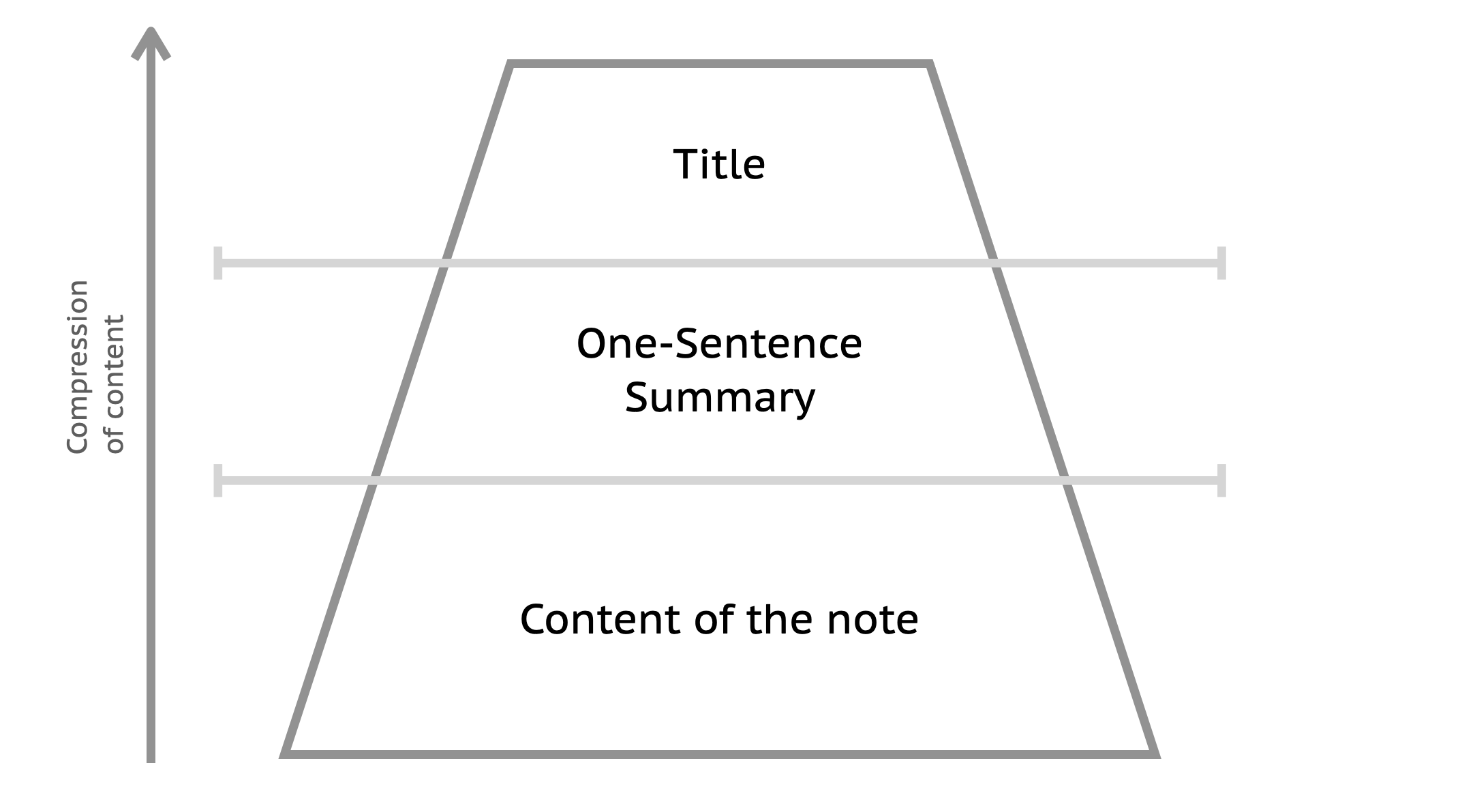Why the Single Note Matters
A while ago, I offered free feedback on individual notes to seven people. I did this to showcase the importance of putting effort into individual notes.
The ability to write a good single note is one of the main pillars of the Zettelkasten Method. In fact, it is a skill that is universally needed and independent of the Zettelkasten Method.
![close up macro shot of a blacksmith pulling (a single+ white+ paper card)++ out of a huge forge fire, epic fire lighting, (unharmed paper)1.2, cinematic, very dark background, dimly lit, overblown, cinematic, (two tone lighting)+, paper detail [hands, humans, body, eye contact, holding tools, poorly drawn, blurry, flowers, human, man, woman, wrong anatomy, missing limbs, ugly, missing fingers, (deformed, distorted, disfigured)1.3, poorly drawn, bad anatomy, wrong anatomy, extra limb, missing limb, floating limbs, (mutated hands and fingers:1.4), disconnected limbs, mutation, mutated, ugly, disgusting, blurry, amputation, cropped head, missing limbs, multiple people, multiple sheets of paper, curled, cropped paper]](/posts/why-single-note-matters/2023-03-24_schmied2.png)
Most People Miss the Opportunity to Explore Inwards
If you adhere to the principle of atomicity, you aim to map one idea with one note in your Zettelkasten. To achieve this, you need to go in two directions:
Outwards. That means that you try to draw a boundary between the idea of the note and other ideas. If you complete this task correctly, you have isolated the idea successfully.
Inwards. That means that you explore the idea itself. Luhmann wrote that one of the advantages of his system is the “free internal branching”.[^luhmann1993]
The digital Zettelkasten, freed from physical limitations, offers a unique feature: You can flesh out ideas, look at them from different directions, apply different ways of analysis, and use theoretically infinite methods to explore the idea on a single note. As a result, the note grows in size, but then you can refactor it. You refactor the note, move the grown components as new ideas into new notes and make the parent note about the relationship between the new notes.
This is one of the major ways how the organic, bottom-up style of linking within the Zettelkasten happens. It is the byproduct of learning deeply and externalize your thoughts while you are learning. If you don’t get organic, bottom-up style linking, chances are that you don’t put much effort into learning about the idea at hand.
Learning the Method Depends on Mastering the Material
I not only comment on the actual technicalities of the Zettelkasten Method like tagging conventions when I give feedback on notes, I also include feedback on how learning works, and the actual content of the note. The reason is that it is not possible to divorce the content of the note from the method since the development of the note is identical to the development of one’s thought. I have to be aware of both layers, and you should, too.
Surprisingly frequently, people shoot themselves in the foot when they are not diligent when it comes to the content. How can you decide on a good title when you don’t have a good grasp of the content?
There is a two-step compression of the content built into the Zettelkasten Method: The one-sentence-summary compresses the summary to one sentence (or two). The title is a further compression of the content into a few words. Working on the one-sentence summary and the title is an act of learning itself. You cannot get any understanding of the Method without real content. See this video for further explanations: How to write good titles for your Zettelkasten

So I often encourage people to develop the content of the note when I give feedback on notes. You cannot take a note just for the sake of taking a note. You need to express your respect for the content.
If a person decides to put effort into the development of a note, my feedback aimed at note-taking results in a learning experience that goes beyond the method. It is not only that I enjoy witnessing the process of somebody developing an idea and deepening his or her understanding. The more you grow your Zettelkasten, the more it can provide you with that feedback. My feedback functions as a temporary surrogate for the learner’s general knowledge development skill.
The Verdict
Take each note seriously and develop the skill of unfolding a single thought on an external medium like paper or a screen. Doing this, your Zettelkasten becomes a training device for your mind. Often people miss out on this step during the pursuit of efficiency, or just fall into the trap that their knowledge system only can manage their knowledge instead of being a true companion.
See these forum threads for both the notes and my feedback:
- Thinking in Built Spaces
- Connection Discovery Through the Stream of Throught
- Trajectory of Acquisition
- The Ratio of Our Intellects
- Align Usefulness and Relevancy to Move Forward
- On Believing and Either Deceiving Ourselves or Seeing Truth
- The Wizard’s Mistake
Christian’s Comment: Why the single note matters for a programmer Zettelkasten can be summarized with the quip “garbage in, garbage out”: You can’t expect to reap amazing insights when you don’t take care and invest into every single one of your Zettel.